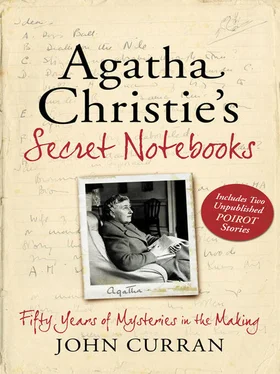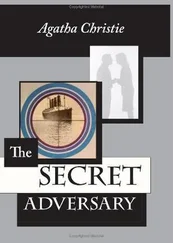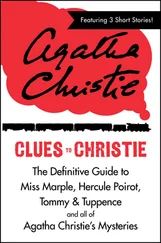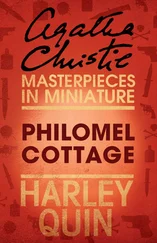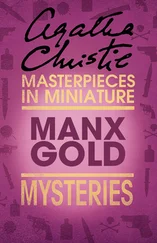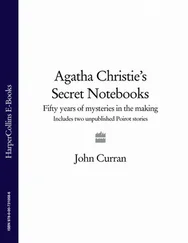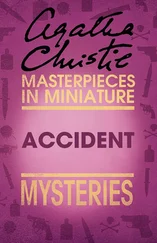In August 1948 Penguin Books made publishing history when they issued one million Agatha Christie books on the same day—100,000 copies each of ten titles. The venture was such a success that it was repeated five years later. This time they were titles of her own choosing, and for each she wrote a special Foreword giving some background information. One of this second batch was The Labours of Hercules and in its Foreword Christie explains that Poirot’s Christian name was the inspiration that prompted her to write these stories. She goes on to explain that some of the tales, ‘The Lernean Hydra’ and ‘The Cretan Bull’, for instance, were straightforward and, indeed, these are very typical Christie village-murder-mystery Poirot cases. ‘The Erymanthian Boar’ and ‘The Girdle of Hyppolita’, she reveals, gave her more trouble—and ‘The Capture of Cerberus’ almost defeated her.
The metaphors throughout are inspired—wagging tongues represent the multi-headed viper in ‘The Lernean Hydra’, a sleazy tabloid newspaper stands for the polluted Augean Stables and ‘The Apples of the Hesperides’ are those on a priceless Cellini chalice. The stories themselves range from the domestic mystery in ‘The Lernean Hydra’ and the nostalgic love story, albeit with a Christie twist, in ‘The Arcadian Deer’, to the brutal thriller in ‘The Erymanthian Boar’. Amusing scenes—Poirot suffering in a hotel in the west of Ireland—alternate with terrifying scenes—Poirot helpless at the approach of a razor-wielding criminal—and poignant ones—Poirot convincing a terminally ill ballerina to return to her true love.
In many of the stories she manages to work in a second example of symbolism apart from the main one. ‘The Erymanthian Boar’ features a dangerous criminal in snowy surroundings, mirroring the physical setting as well as the metaphorical animal; ‘The Cretan Bull’ has a man of magnificent physique as well as, literally, basinfuls of blood; in ‘The Apples of the Hesperides’ Poirot is helped by the tipster Atlas who, like his famous namesake, takes the weight of Poirot on his shoulders; and the clamouring schoolgirls at the end of ‘The Girdle of Hyppolita’ are compared to the Amazons from the fable. Hercules’ castanets of bronze in the original are replaced by the modern telegraph in ‘The Stymphalean Birds’; the golden horns of ‘The Arcadian Deer’ appear as the golden hair of Katrina and in the mythical version Hercules does not kill the deer but returns it safely, as does Hercule Poirot with the love of Ted Williamson’s life.
There are copious notes for this inventive collection. This in itself is unusual, as there are relatively few notes for most of Christie’s short stories. This is probably because the writing of this collection involved extra research into the originals and more working out of detail than normally associated with the writing of a short story. Also, these stories were written as part of a collection and not, as before, individual stories for sporadic publication. Most of these notes are included in Notebook 44 with some minor notes scattered over three others, Notebooks 28, 39 and 62.
Notebook 44 contains some of the background to the Greek myths that Christie used as a basis for the tales:
Hydra of Lernea—9 heads burnt out in flames—last head cut off and buried
The Deer with feet of bronze—horns of gold—feet of bronze—dedicated to Artemis—a year to find her
Boar of Erymanthe—Combined with centaurs of Pholoe—trapped on precipice of snow and captured alive
Augean Stables—River through breach in wall
Birds of Stymphalia—Birds of prey eat human flesh. H drives them out with bronze castanets and shoots them
Cretan Bull—mad bull
Horses of Diomedes (Mares)—savage—chained to mangers—H tames them
Girdle of Hyppolita—Hera spreads rumour and Amazons revolt
Troupeau of Geryon—giant with 3 bodies or with 3 heads—guarded by 2-headed dog Ortho and Eurython
Apples of Hesperides—H holds up sky while A[tlas] gets apples—A wants table then H asks for cushion for shoulder—hands back to A and goes off. Golden apples given by Immo to Jupiter for nuptials—apples delivered—are given back to Hesperides
Cerberus—Descent into underworld—no weapon—Cerberus returns to underworld
She toyed with a few ideas before getting down to the serious plotting and many of these were incorporated into the finished product. Eight of the stories follow, with only minor variations, these initial notes, although she made changes to ‘The Horses of Diomedes’. Notice, though, how the two stories that she admitted gave her some trouble, ‘The Erymanthian Boar’ and ‘The Girdle of Hyppolita’, change quite considerably and the one that ‘almost defeated’ her, ‘The Capture of Cerberus’, is totally different in the published collection:
Lion of Nemea—Peke dog kidnapped
Hydra of Lernea—Poison Pen—or scandal in country place—one person at bottom of it
Lernean Hydra—Woman suspected of killing husband—(verdict was accident!)
Deer of Arcadia—Dancer who disappears—young man—could P find her
Erymanthian Boar—Criminal traced and taken—race gang?
Stymphalean Birds—Young man blackmailed…by two women
Augean Stables—Political scandal—HP to distract attention—gets medical student to produce dead body Sham murder? Party funds or archaeological theft?
Cretan Bull—Mad killer?
Horses of Diomedes—taming of his children—boys? By introducing them to police work
Girdle of Hyppolita—a head mistress? Oxford don? A priceless manuscript?
Geryon Cattle—Strange sect—leader unmasked—perhaps the flock of some pastor—a new sect—religious enthusiast Ceryon from Orient—eastern Religion
Apple of Hesperides—Treasure in a convent—disappeared many years ago—stolen—given by thief to convent
Gerberus—A dog story? Or somebody dead—brought back from the dead—or been murdered?
‘ The Nemean Lion’
The kidnapping of a Pekingese dog provides Poirot with his first Labour.
As can be seen, the notes for ‘The Nemean Lion’ are extensive and follow closely the published version. It may well have been the case that, as the first story in the series, Christie gave it a lot of thought and careful consideration. It is also the longest story in the collection. There is a lone note in Notebook 39 that foreshadows this plot; although it does not generally resemble the published version of ‘The Nemean Lion’, the story does feature the important fact of Miss Carnaby’s inheritance of a Peke from a former employer:
Companion left Peke—she goes as housemaid—gives different names alternate places? She and friend—latter gets reward
The next extract, from Notebook 44, is an accurate precis of the published story:
HP summoned by Joseph Hoggin—old boy very upset—his wife lost her Pekingese—received a demand for £200, which she paid and dog was returned. HP has interview with Mrs J and Miss Carnaby—the companion—foolish talkative woman. Facts are as follows—Amy and Ching went to park—A saw baby in his pram—just speaking to Nurse but Ching gone—lead cut—she fetches lead—HP admits it is cut—the women look at him breathlessly—then letter comes—the money to be sent in £1 notes.
In the end P instructs Georges to find flat between certain limits—he asks Sir J—remind him of manufacturer in Liege who poisoned his wife to marry a blonde secretary. P’s visit to flat on Miss A’s day out—Augustus barks and tries to keep him out. The invalid sister—P knows all—her defence—no pension—old age—no home and no education—a trade union. Ching left at flat—Augustus taken—can always find his way home. How often? Ten times.
Читать дальше
Конец ознакомительного отрывка
Купить книгу
